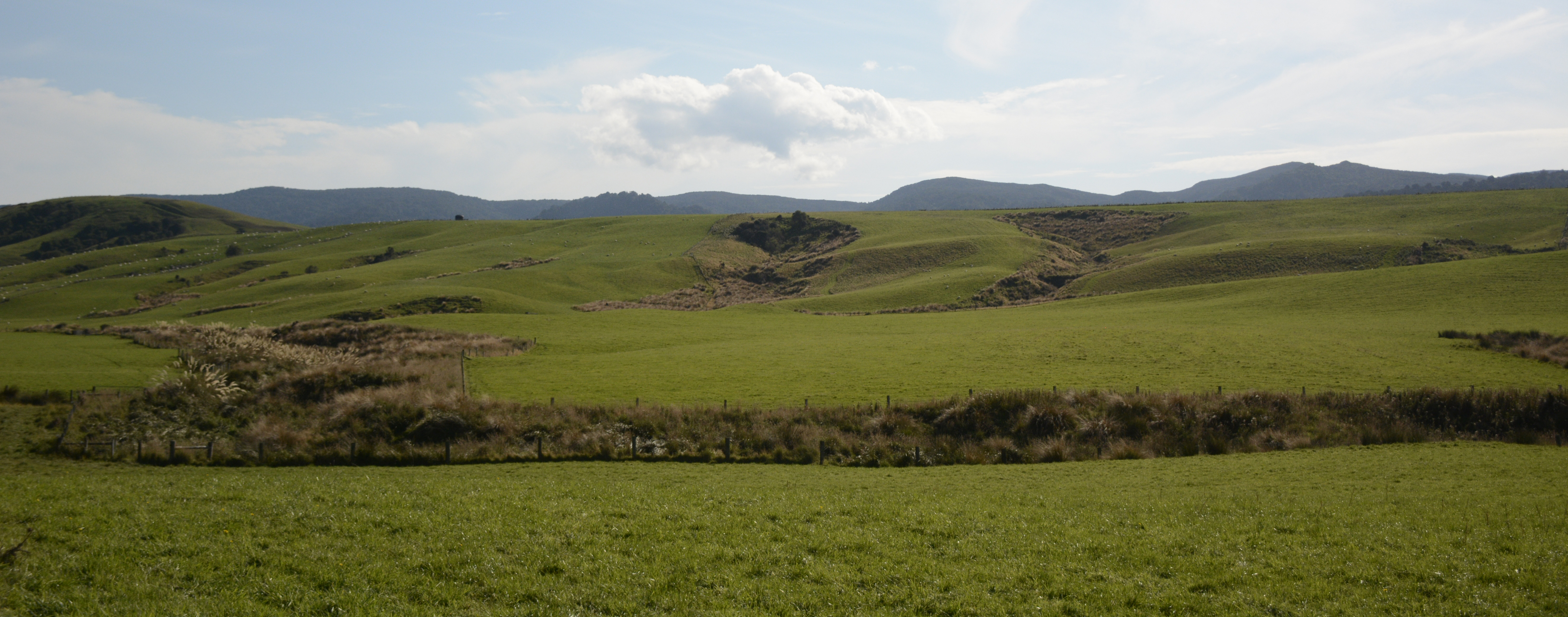Planting Gullies
What
A gully is a trench or narrow channel that is formed by water that runs across land and wears it away. Most gullies form along hillsides. When a stream or runoff from heavy rainfall erodes the land and forms a trench or ditch, the result is a gully. Vegetating these areas with grasses can significantly slow the flow of water from the land surface. Trees can be used to stabilise steeper gullies.
Why
Gullies are prone to erosion and cause damage to agricultural land which includes soil loss, increase in surface runoff, lower soil water-holding capacity and lower water quality.
Gullies play an important part in the waterway system feeding tributaries of larger rivers and contributing to water quality in the wider catchment.
In small gullies, tussock grasses are good at slowing down the water and retaining sediment. Willow and poplar poles are commonly used in planting to control larger scale gully erosion but native species such as Pittosporum are also effective. Planting poles in pairs causes the root systems of the trees to overlap across the gully, preventing further down-cutting of the gully bottom and slumping of the sides. Small dams can be built between the poplars to trap sediment.

References
Davies-Colley, R. J. (2013). River water quality in New Zealand: an introduction and overview. Ecosystem services in New Zealand: conditions and trends. Manaaki Whenua Press, Lincoln, 432-447.
Hambling, R. (2008). Gully erosion and sediment load: Waipaoa, Waiapu and Uawa rivers, eastern North Island, New Zealand. Sediment dynamics in changing environments, (325), 339.
Marden, M., Herzig, A., & Arnold, G. (2011). Gully degradation, stabilisation and effectiveness of reforestation in reducing gully-derived sediment, East Coast region, North Island, New Zealand. Journal of Hydrology (New Zealand), 19-36.
McKergow, L. A., Matheson, F. E., & Quinn, J. M. (2016). Riparian management: A restoration tool for New Zealand streams. Ecological Management & Restoration, 17(3), 218-227.
Monaghan, R., Manderson, A., Basher, L., Spiekermann, R., Dymond, J., Smith, C., ... & McDowell, R. (2021). Quantifying contaminant losses to water from pastoral landuses in New Zealand II. The effects of some farm mitigation actions over the past two decades. New Zealand Journal of Agricultural Research, 1-25.